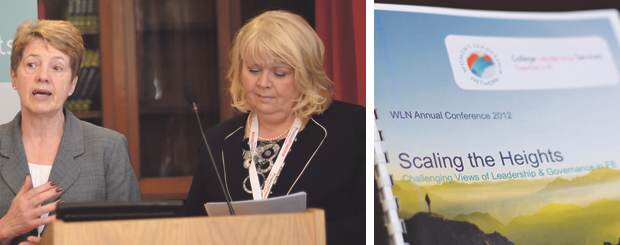Governing boards were a central topic of the conference, an area described by the Women’s Leadership Network (WLN) as particularly challenging.
Using data from the Association of Colleges, the WLN has found that only 17 per cent of chairs on governing boards are female. Currently, the total percentage of women on boards is unknown, as the data has not been collected. The WLN is currently conducting research into this, which will be published in September.
The director of the WLN, Sue Daley, said: “The reason we need to do it is because governors have a massive influence on what happens in colleges and especially on appointments of senior post holders.
“We need to understand if there is an impact of having more women on boards or not. For me, frankly, it’s immaterial. There should be a gender balance anyway.
“But there may be some particular impact that we can identify from it to persuade governing bodies that they need to take this more seriously.”
Sally Dicketts, the chair of WLN, told FE Week that there are some “appalling examples” where governing bodies have made it “very clear” that they do not want a woman. The principal of Oxford and Cherwell Valley College said that although it is not something that she hears regularly, it is something that comes up.
The number of new female principals being appointed has dropped; from 45 per cent in 2011 to 28 per cent in 2012
The research was prompted partly by two chairs that approached the organisation because they wanted peer support. The key aim of the conference is to provide training and development opportunities for women, and inspire them to go for senior leadership roles. The two chairs, Margaret Serna, from Lincoln College, and Carol Jones, from Stoke on Trent College, motivated and advised audience members on what boards are looking for when interviewing for top positions.
Helping women work their way to the top was a recurrent subject throughout the event. When kicking off the ceremony Ms Dicketts asked attendees: “What have you done in your organisation to make a woman succeed a bit better?”
The principal of Oxford and Cherwell Valley College highlighted the fact that women have not “made it” and called on the audience to help less senior women progress.
The overall percentage of female college principals has remained constant for the second year running at 38 per cent, according to research by the WLN. Ms Daley is also concerned that the number of new female principals being appointed has dropped; from 45 per cent in 2011 to 28 per cent in 2012.
With 46 per cent of second tier managers being women, it raises the question about why women are not progressing to the next stage.
For the second year running, however, 47 per cent of principals of the larger colleges in England (those with allocations of over £25m) are women and the percentage of female principals within the 157 Group is 63 per cent.
To ensure that women are fairly represented in the further education sector it is critical that flexible working is addressed and the Learning and Skills Improvement Service is currently funding research into the topic.
Ms Dicketts said the difficulty is that if you don’t ask, then you don’t get, and she believes it’s becoming increasingly difficult to ask because of funding cuts.
“People are worried about their career opportunities,” she said. “If I do this will they not look at me favourably.”
The principal argues that we need to start addressing the question of flexible working earlier, rather than reacting when a member of staff has children and then asks for reduced working hours. If planned earlier, she said that flexible working would be “much more transparent and supportive”.
For more information on who spoke at the event and the winner of the Inspiring Leader award, look out for the piece in our paper.


Your thoughts